Introduction
How Do Rabbits See: Rabbits, those small, furry creatures that hop around our gardens and meadows, have always intrigued humans with their adorable appearance and intriguing behaviors. But have you ever wondered how rabbits see the world around. Their vision is a fascinating aspect of their biology that plays a crucial role in their survival and daily activities. In this exploration, we will delve into the intriguing world of rabbit vision, uncovering the mysteries of their visual abilities and shedding light on how they perceive the environment that surrounds them. Understanding how rabbits see not only offers insight into their fascinating biology but also provides valuable knowledge for those who share their habitat or care for them as pets. Rabbits eat, with their large expressive eyes and keen senses, have evolved over centuries to adapt to their natural habitats and the challenges they face in the wild.
Their vision is a critical component of their survival strategy, allowing them to navigate their surroundings, identify potential threats, and find food. As we peer into the world of rabbit vision, we will explore the unique characteristics of their eyes, such as their field of view, color perception, and visual acuity. We will also delve into how these features influence their behavior, including their feeding habits, grooming rituals, and social interactions. Whether you’re a curious observer of these endearing creatures, a rabbit owner seeking to better understand your furry friend, or simply someone fascinated by the diverse ways in which animals perceive the world, this exploration of rabbit vision promises to be an enlightening journey.
In our exploration of how rabbits see, we will also consider the unique challenges they face in their daily lives. Rabbits are crepuscular animals, meaning they are most active during the dawn and dusk, a time when lighting conditions can vary significantly. Understanding how their vision adapts to low-light environments and the strategies they employ to detect predators or locate mates during these times is a fascinating aspect of their visual capabilities. Furthermore, we will discuss how the domestication of rabbits has influenced their vision over time, as pet rabbits may have different visual needs and experiences compared to their wild counterparts. This insight can be valuable for rabbit owners looking to create enriching environments for their beloved pets.
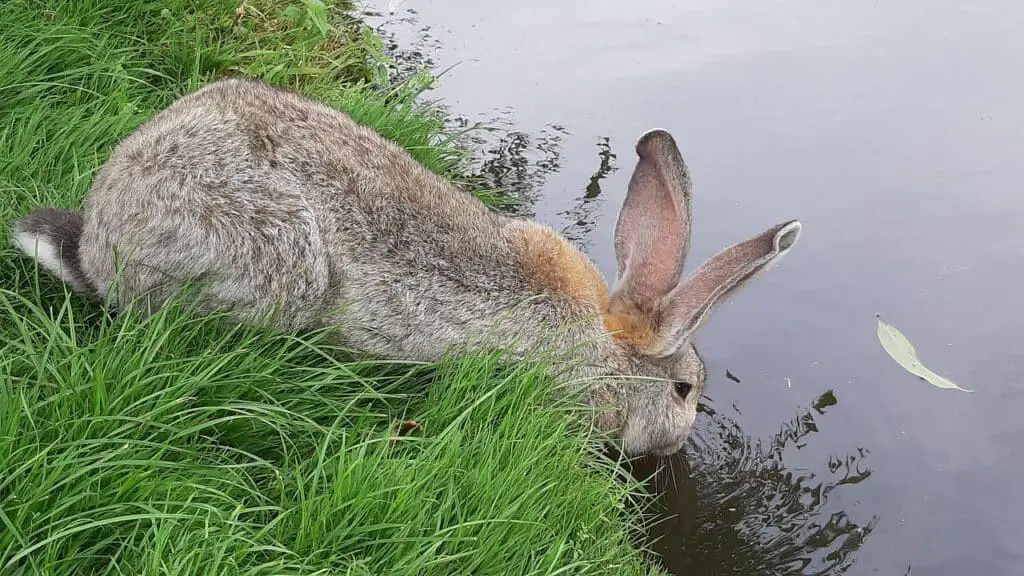
Do bunnies see in color?
Due to the composition of their eyes, rabbits throughout their lifespan only have two-color vision. (Humans have three-color vision.) Scientists say that’s because the retinas of domestic rabbits have more rods than cones. Cones give us the ability to see color.
First and foremost, it’s important to note that while rabbits do possess a degree of color vision, it is quite different from human color vision. Human vision is based on trichromatic color perception, with three types of color receptors known as cones, which allow us to perceive a broad spectrum of colors. In contrast, rabbits are dichromatic, which means they have only two types of color receptors.
Rabbits primarily have receptors for blue and green wavelengths of light, but they lack receptors for red light. This means that their color vision is somewhat limited compared to humans. They perceive the world in a range of blue and green hues, but they cannot distinguish between red and green or see the full spectrum of colors as we do.
The reason for this difference in color vision lies in the evolutionary history of rabbits. Their ancestors were primarily crepuscular or nocturnal animals, and they did not rely on color vision for survival. Instead, their visual system adapted to detect movement and contrast in low-light conditions, which was more crucial for avoiding predators.
Understanding the limited color vision of rabbits can have practical implications, especially for rabbit owners. For instance, when choosing toys or accessories for pet rabbits, it may be more effective to focus on contrasts in shades of blue and green, as these are the colors they can perceive most distinctly.
Do rabbits Recognise their owners?
Rabbits will remember the people that they spend a lot of time with, and this includes their owners and caretakers. As prey animals, they have neurologically developed with a strong long-term memory for places and routines. You can use these associations to help strengthen your rabbit’s memory of you.
Rabbits have an acute sense of smell, and they often identify people by scent. If you are the primary caregiver for your rabbit and spend time with them regularly, they will become familiar with your scent. This is one way they can distinguish you from others.
Rabbits also rely on visual cues to some extent. They can recognize the shape and appearance of familiar individuals, including their owners. Your rabbit may not have a detailed visual memory like humans, but they can certainly differentiate between familiar and unfamiliar faces.
While rabbits may not respond to their owners’ voices in the same way dogs or cats do, they can still associate specific sounds, such as your voice, with positive experiences like feeding or petting. Over time, they may learn to associate your voice with these pleasant interactions.
Rabbits are social animals and can form strong bonds with their human caregivers. Spending quality time with your rabbit, such as gentle petting and providing enrichment activities, can strengthen your bond and reinforce their positive association with you.
Do rabbits see in the dark?
Yes, rabbits can see in the dark, but not very well. Their eyesight works best in the low light of dawn and dusk. Similar to human eyes, a rabbit’s vision will adjust to the conditions. They will be able to easily discern movement in the dark, but will also rely on their other senses, like smell and hearing.
Rabbits have keen senses, and this includes their ability to detect subtle movements and sounds in low light. Their large, sensitive ears help them pick up on auditory cues, such as the rustling of leaves or the approach of predators. This heightened sensory perception assists them in navigating and responding to their environment during crepuscular hours.
Like many animals adapted to low-light conditions, rabbits have a reflective layer of tissue in the back of their eyes called the tapetum lucidum. This layer reflects light that passes through the retina back through the eye, effectively giving the photoreceptor cells a second chance to capture the light. This enhances their ability to see in dim lighting.
While rabbits primarily rely on rods (cells in the eye responsible for low-light vision), they also have some cone cells for color vision. These cones are most sensitive to blue and green wavelengths of light. This limited color perception allows rabbits to differentiate between certain objects and potentially identify threats or food sources, even in low-light conditions.
Rabbits have sensitive whiskers, known as vibrissae, which help them navigate in the dark by detecting changes in their environment. These whiskers are highly attuned to touch and can sense nearby objects, aiding rabbits in avoiding obstacles and potential dangers.
Are rabbits happy to see you?
They binky when they see you
Rabbits will often binky and start zooming around when they are let out of their enclosure for some time to exercise. Sometimes a rabbit will binky and run toward you because they are just so happy to see you.
When a rabbit approaches you willingly and nuzzles or nudges you with their nose, it is often a sign of trust and comfort. This behavior can indicate that they feel safe and happy in your presence.
Some rabbits will emit a soft, rhythmic purring sound when they are content or relaxed. This sound, often described as “tooth purring” because it is produced by grinding their teeth, is a sign of contentment and relaxation.
Rabbits are social groomers, and if they groom you or allow you to groom them, it’s a sign of bonding and affection. Mutual grooming is an essential aspect of rabbit socialization.
When a rabbit flops onto their side or back, exposing their belly, it is often a sign of relaxation and trust. This behavior indicates that they feel safe and secure in their environment.
Do rabbits have good memory?
Rabbits have very good memories. They possess what I call orientation memory. Our first rabbit had been in the house only a couple days when we began to feel sorry for her because we kept her in a cage.
Rabbits are known for their keen spatial memory, which helps them navigate their environment and find their way around. In the wild, this memory is crucial for locating food sources, burrows, and escape routes from predators. Domestic rabbits also exhibit impressive spatial memory, remembering the layout of their living spaces, the location of food and water sources, and hiding spots.
Rabbits are social animals and form strong bonds with their companions, whether they are other rabbits or humans. They have the ability to recognize and remember individuals within their social group. This memory helps them distinguish between familiar and unfamiliar rabbits or humans and can influence their social interactions and behavior.
Rabbits can also demonstrate associative memory. This means they can learn to associate specific cues or behaviors with certain outcomes. For example, they can learn that a particular sound or gesture from their owner means they will receive food or attention. This type of memory is the basis for training rabbits and teaching them various commands or tricks.
Rabbits can also habituate to their environment, which means they become accustomed to familiar sights, sounds, and smells over time. While this might not seem like memory in the traditional sense, it allows them to filter out non-threatening stimuli and focus on new or unusual changes in their surroundings.
How do rabbits sleep?
They don’t always sleep with their eyes open, but they often do. This allows them to stay alert and spot predators in case of danger. They can also close their eyes when they sleep, but it takes them a little longer to wake up. Rabbits are nocturnal animals, so they sleep most of the time during the day.
Rabbits are crepuscular animals, which means they are most active during the dawn and dusk hours. Their sleep patterns are adapted to this lifestyle. During the day, rabbits often take short naps or rest periods, remaining alert to potential threats. These naps are usually light and brief, allowing them to stay vigilant.
Rabbits are more active at night than during the day, and they tend to have longer and deeper periods of sleep during the night. This is when they get their most restorative sleep. While they may sleep deeply at night, they still maintain a degree of alertness to respond to any disturbances or potential dangers.
Throughout the day, rabbits take frequent “power naps.” These naps can last for just a few minutes to around 15-20 minutes. During these short sleep intervals, rabbits often rest with their eyes closed, but they remain easily awakened and alert to their surroundings. This vigilance is an essential survival strategy in the wild, where they are prey animals.
Rabbits can sleep in various positions, including stretched out on their side, curled up in a ball, or with their legs tucked beneath them. These positions can vary depending on the rabbit’s comfort level and the temperature of their environment. They may also twitch or move slightly during sleep, which is normal and usually nothing to be concerned about.
Is rabbit lucky for home?
It’s not a Hindu myth but a frequently heard Indian myth which I came across numerous times when my family and friends saw a pet rabbit in my house. They often said that a rabbit in the house brings bad luck but this is far from true.
In many cultures, rabbits are seen as symbols of fertility and abundance due to their prolific breeding. Their ability to reproduce rapidly has led to associations with prosperity, growth, and the bountiful abundance of life.
In Christian traditions, the Easter Bunny is a well-known figure associated with Easter Sunday. The Easter Bunny is believed to bring baskets filled with colored eggs, chocolates, and gifts to children. This tradition is rooted in celebrating new life and renewal, which are seen as lucky and auspicious.
In Chinese astrology, the Rabbit is one of the twelve zodiac animals. People born in the Year of the Rabbit are believed to possess qualities such as gentleness, kindness, and good fortune. This adds to the positive associations with rabbits and luck.
While it may seem counterintuitive, in some cultures, carrying a rabbit’s foot as a talisman is believed to bring good luck. This practice dates back centuries and is rooted in the belief that rabbits are inherently lucky animals.
Can rabbits eat cucumber?
Yes, it is safe for rabbits to eat cucumber! Most rabbits will love the fresh taste. Rabbits can also eat cucumber leaves. Before feeding cucumber to your rabbit, wash it in cold water to remove pesticides.
Cucumber should be considered an occasional treat rather than a primary food source for rabbits. While it can be a refreshing and hydrating snack, it should not replace the essential components of their diet, such as hay and fresh leafy greens.
Cucumber has a high water content, which can help keep your rabbit hydrated, especially during hot weather. However, it should not be the sole source of hydration for your rabbit. Fresh, clean water should always be available.
Before offering cucumber to your rabbit, it’s essential to remove the seeds. Cucumber seeds are small and can be a choking hazard. Cut the cucumber into bite-sized pieces and remove the seeds to make it safer for your rabbit to eat.
Offer cucumber to your rabbit in small portions. Too much cucumber at once can cause digestive upset or diarrhea due to its water content. A slice or two a few times a week is generally sufficient.
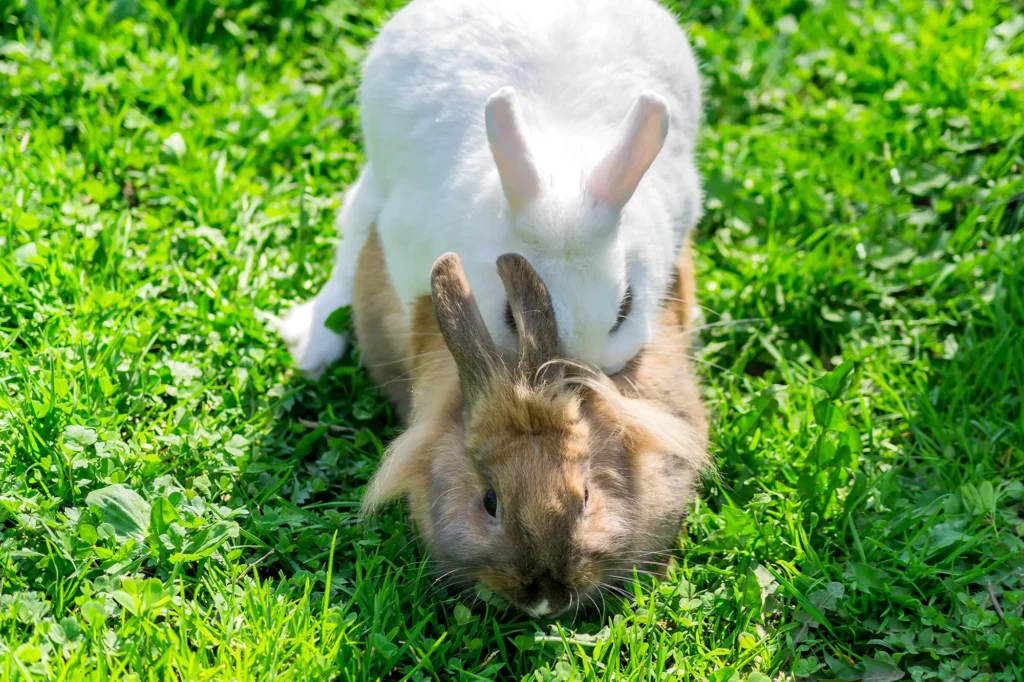
Conclusion
Rabbits, with their large eyes and unique adaptations, have evolved to thrive in a world where keen vision is paramount for survival. We have learned that rabbits possess a wide field of view, enabling them to detect threats from various angles, a vital trait for animals often on the menu of larger predators. Their color perception, while not as rich as that of humans, serves them well in distinguishing between essential elements in their environment, such as the contrast between edible plants and potential dangers. Rabbits’ crepuscular nature has also been discussed, shedding light on how they navigate low-light conditions during their most active hours. Additionally, we’ve considered how domestication has influenced the visual needs and behaviors of pet rabbits, highlighting the importance of understanding their vision for their well-being.
Ultimately, exploring how rabbits see has not only deepened our understanding of these charming creatures but has also provided valuable insights for those who share their world, whether as curious observers or devoted caregivers. It reminds us that the beauty of nature lies not only in its diversity but also in the remarkable ways in which each species perceives and interacts with its surroundings. So, as we conclude our journey into the world of rabbit vision, we leave with a newfound appreciation for the intricate tapestry of life on Earth and the wondrous ways in which it unfolds. Our exploration of how rabbits see, it’s worth emphasizing that understanding their visual capabilities offers more than just insights into their biology. It provides a gateway to a deeper appreciation of the interconnectedness of all living beings and the remarkable diversity of life on our planet.
The study of rabbit vision underscores the adaptability and resilience of these small mammals in the face of natural challenges. It serves as a reminder that every species, no matter how seemingly common or inconspicuous, has evolved unique traits and strategies to thrive in its ecological niche. Furthermore, our examination of rabbit vision highlights the importance of responsible stewardship of the natural world. Whether we encounter rabbits in the wild, in our backyards, or as cherished pets, being attuned to their visual needs and behaviors allows us to coexist more harmoniously with these gentle creatures. It encourages us to continue our quest for understanding the many remarkable ways in which the animal kingdom perceives and interacts with the world, ultimately fostering a greater respect and empathy for all living beings.

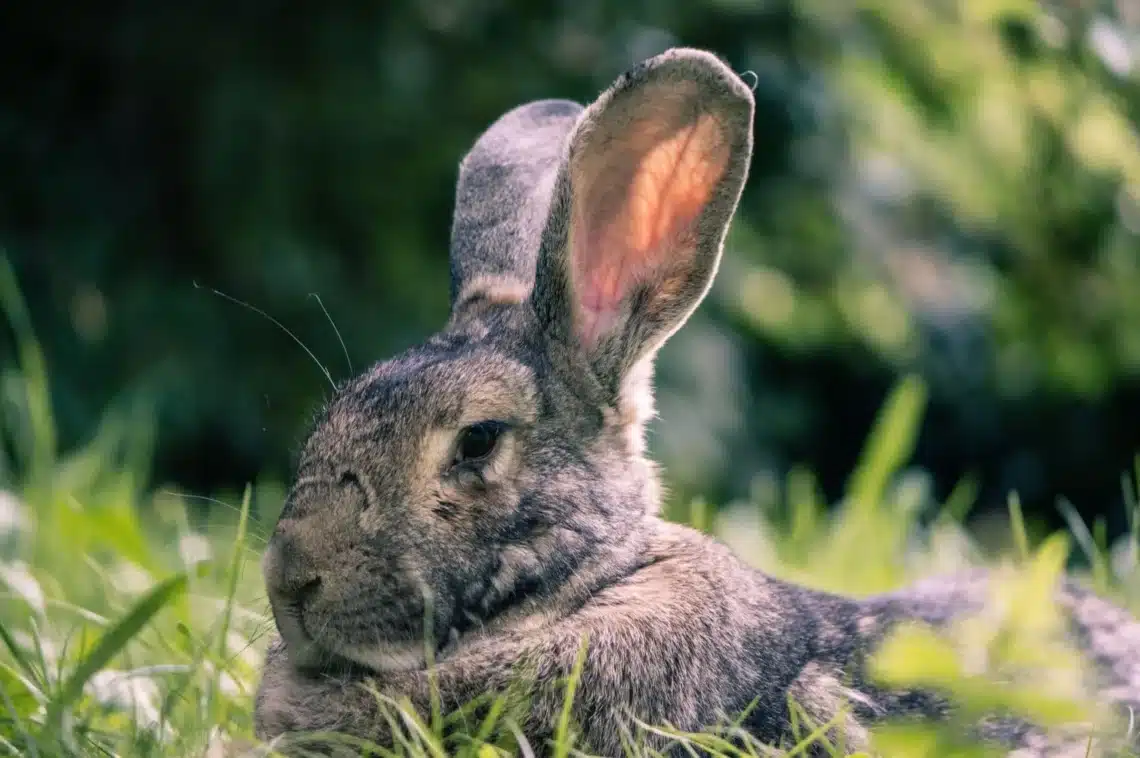
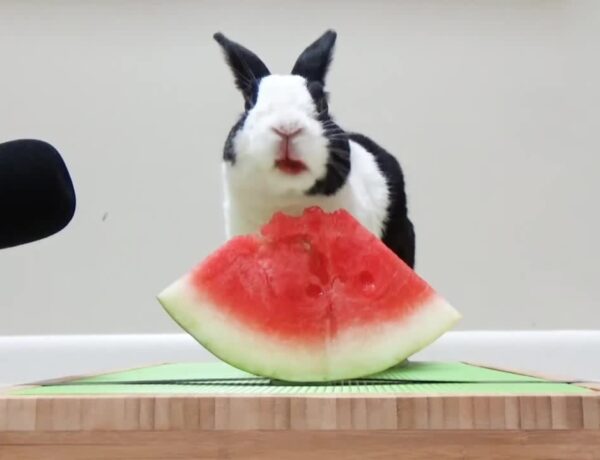
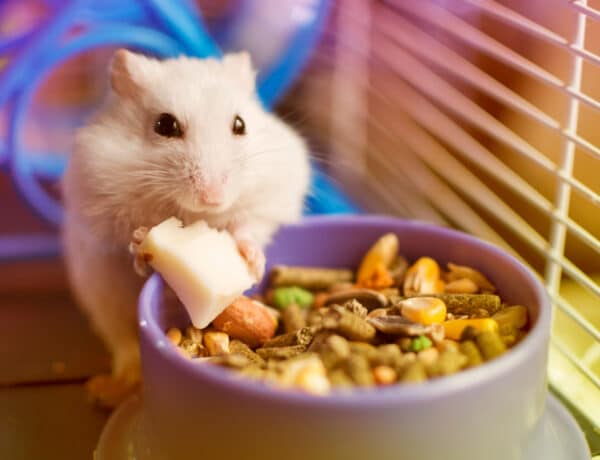

No Comments